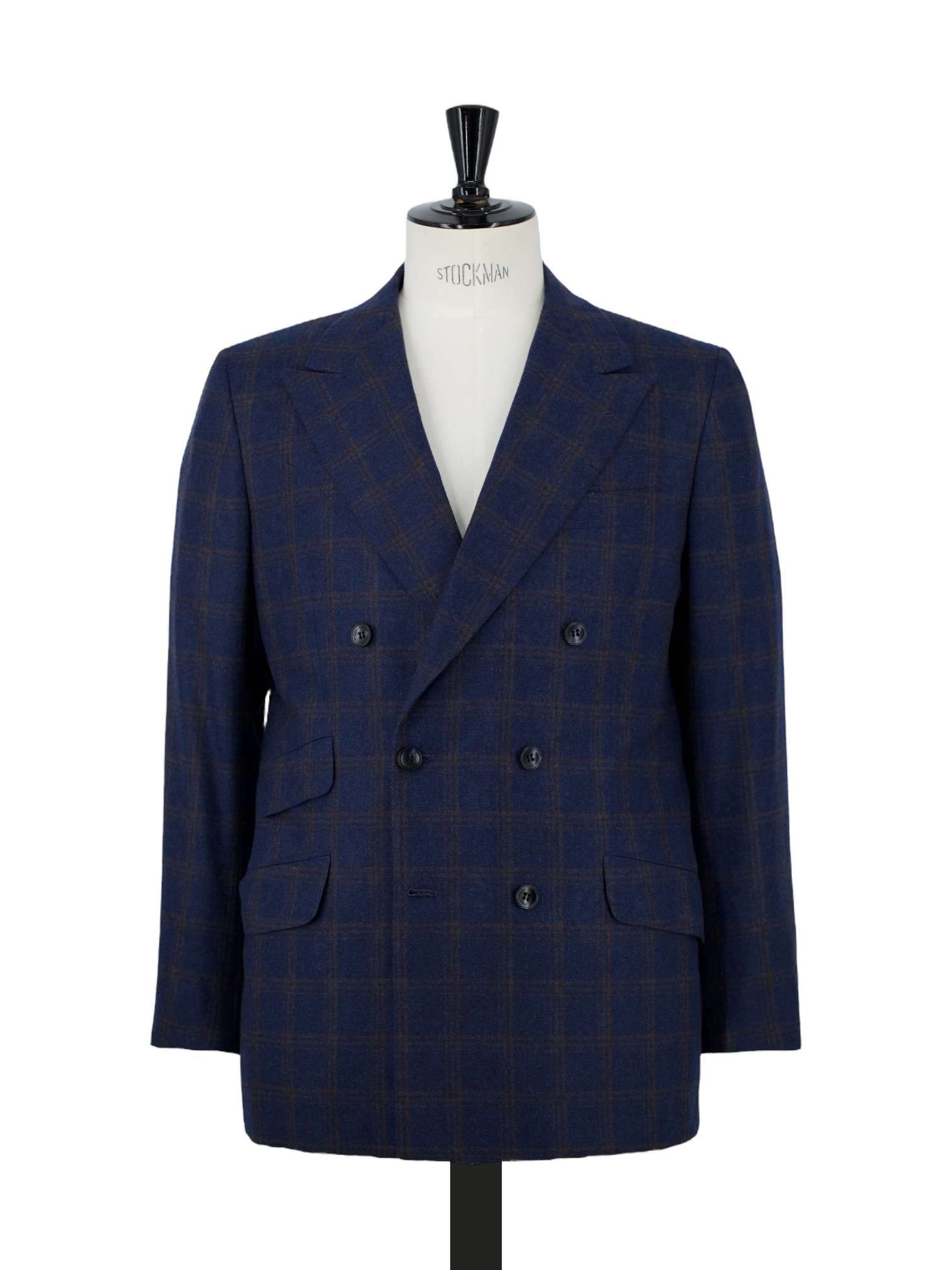
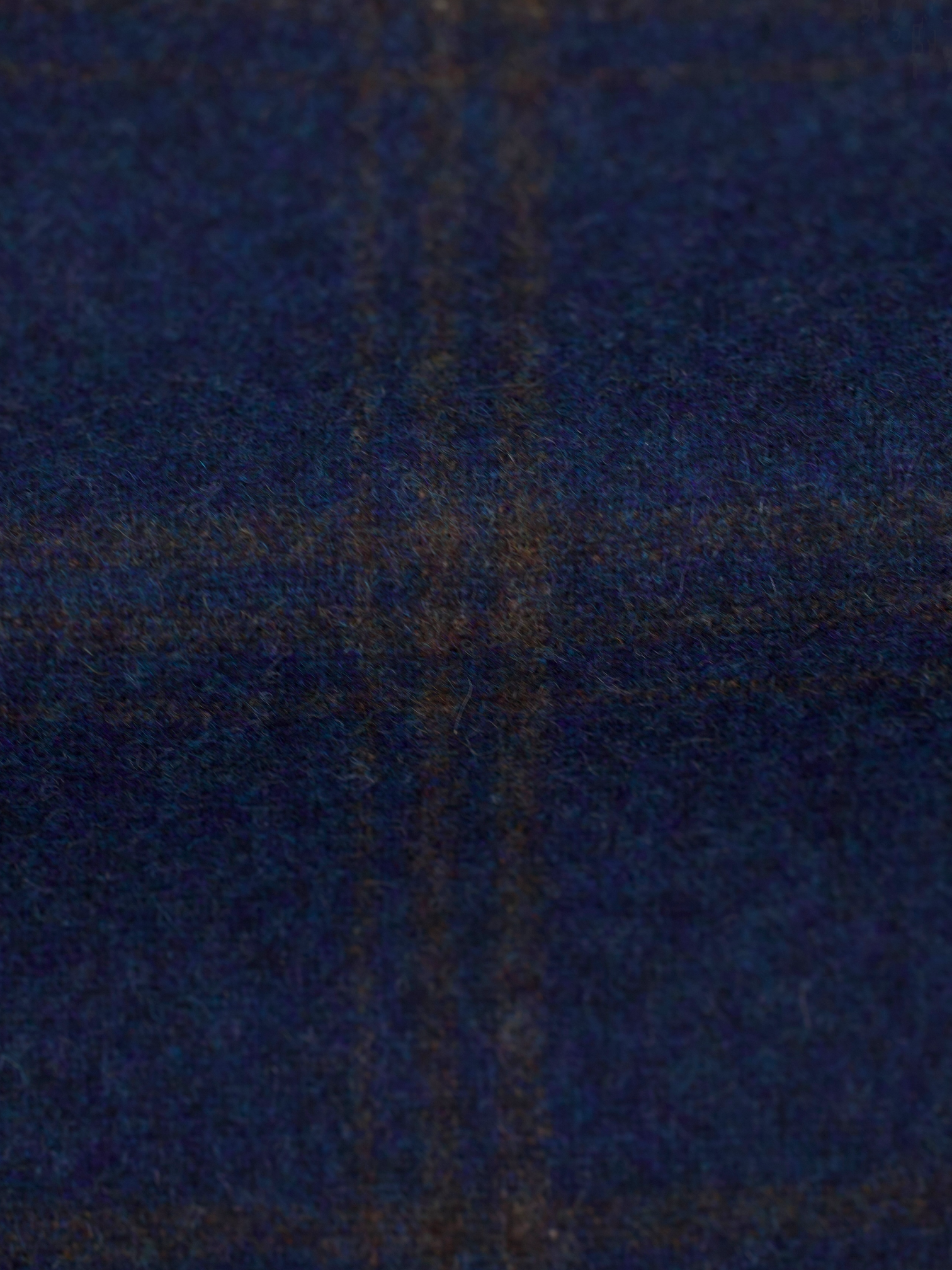
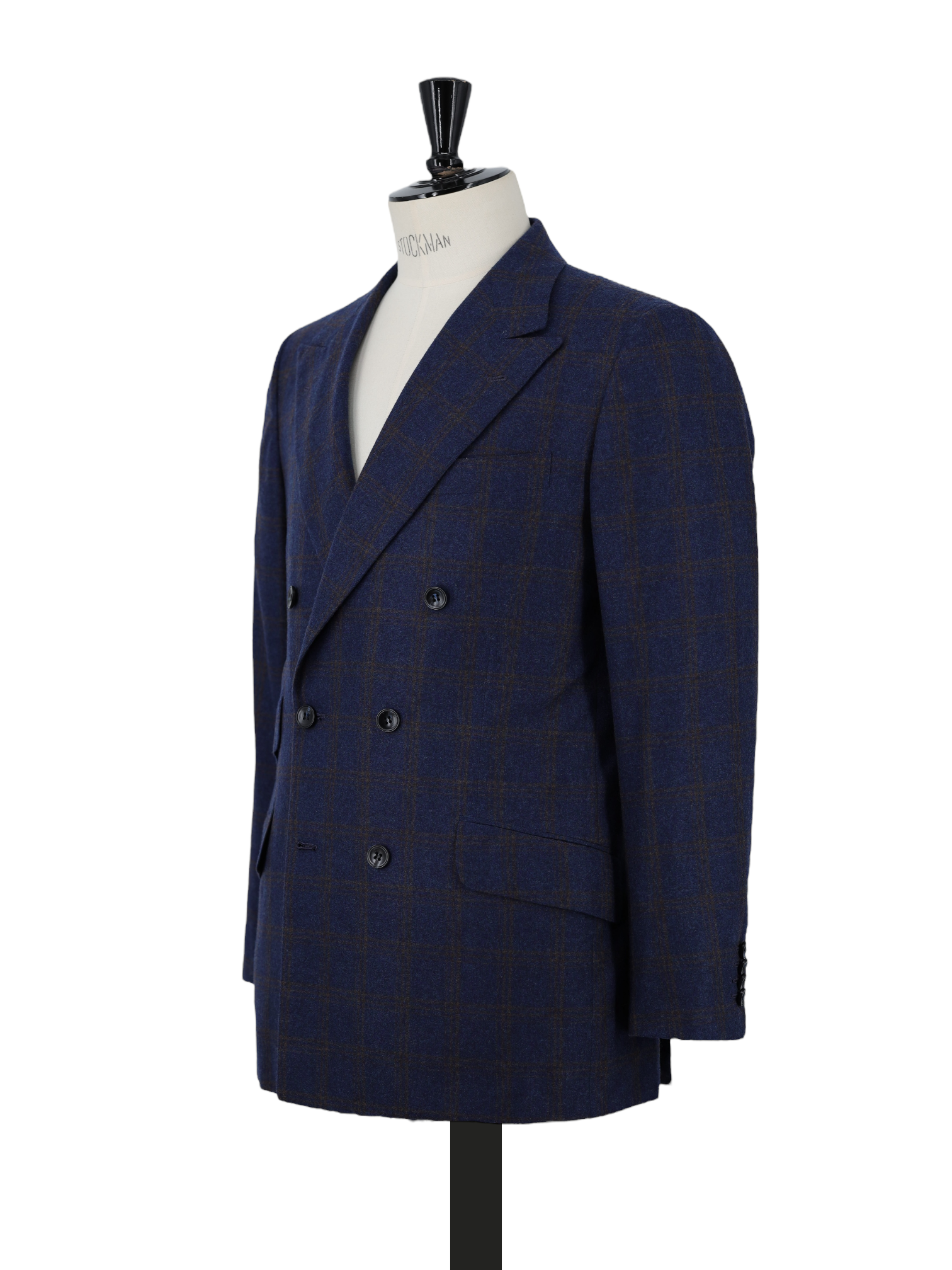
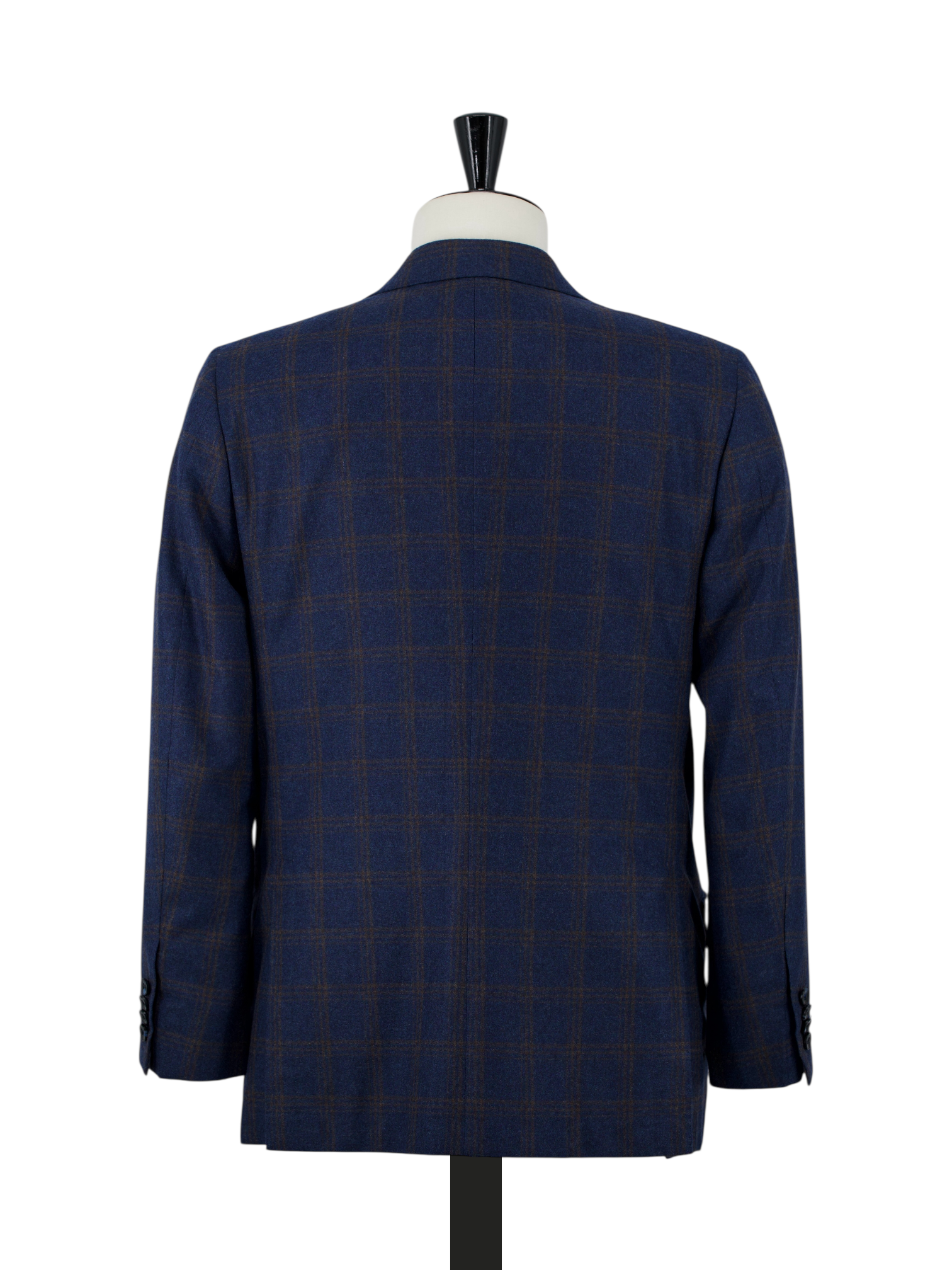
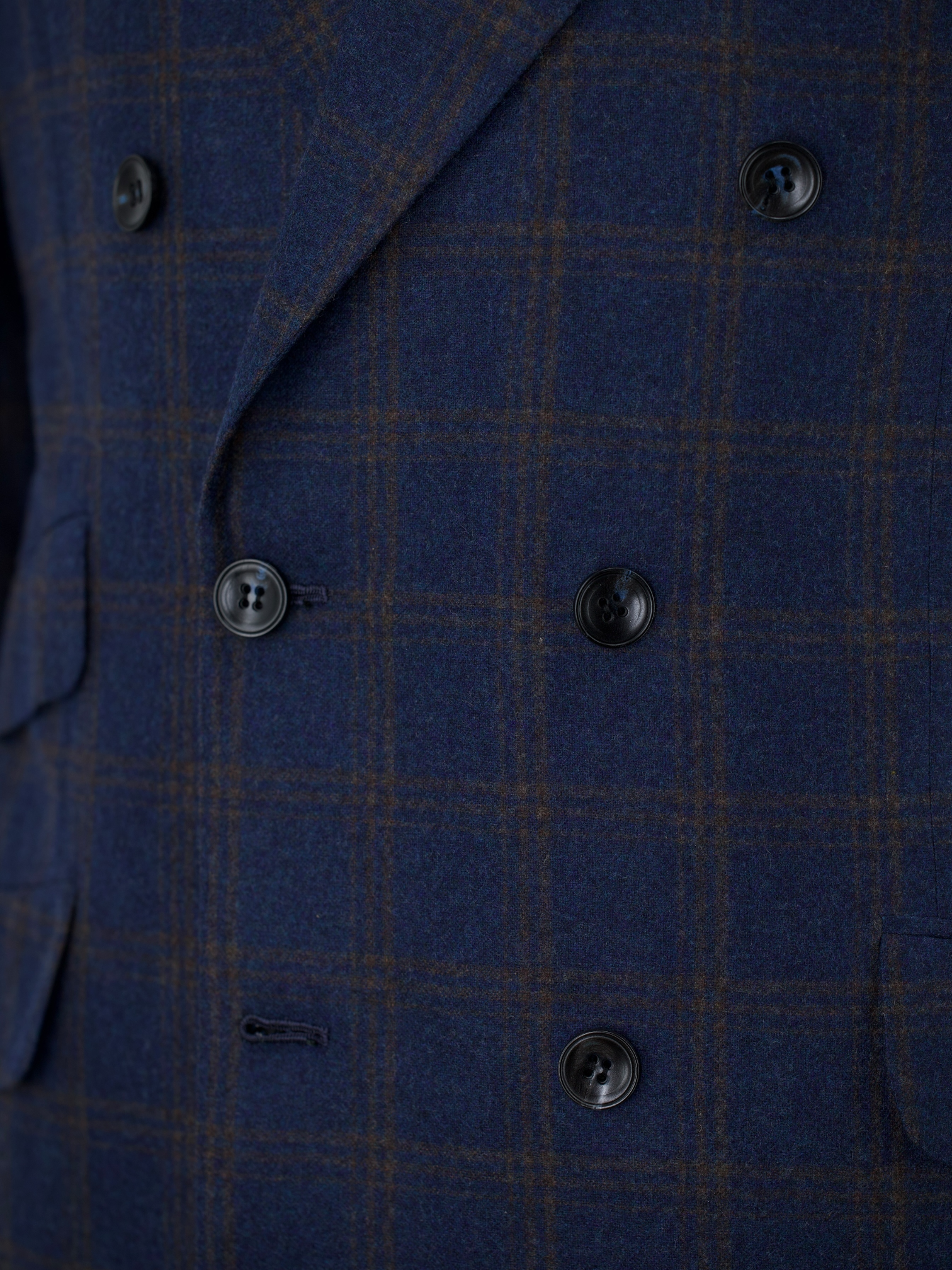
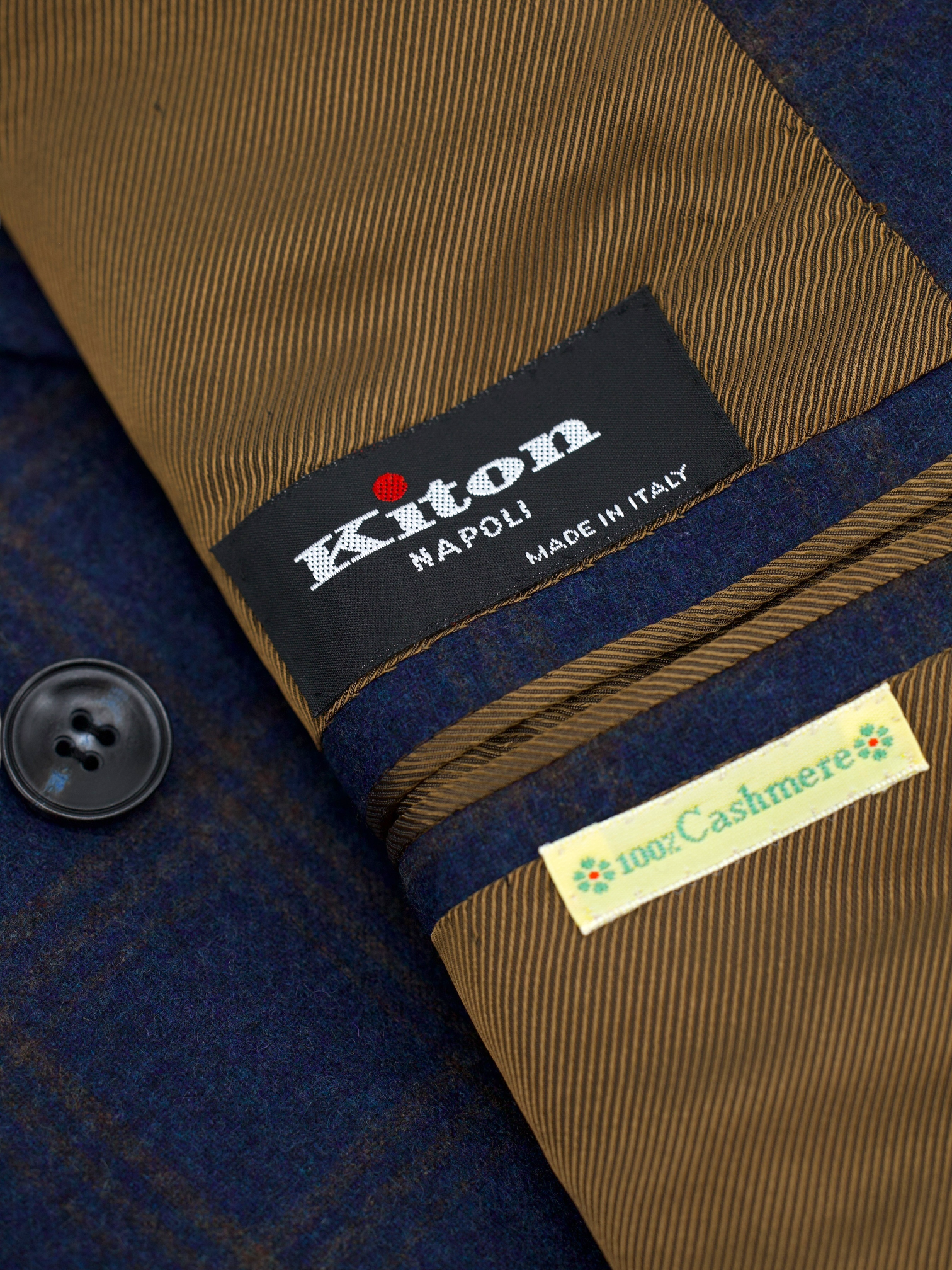
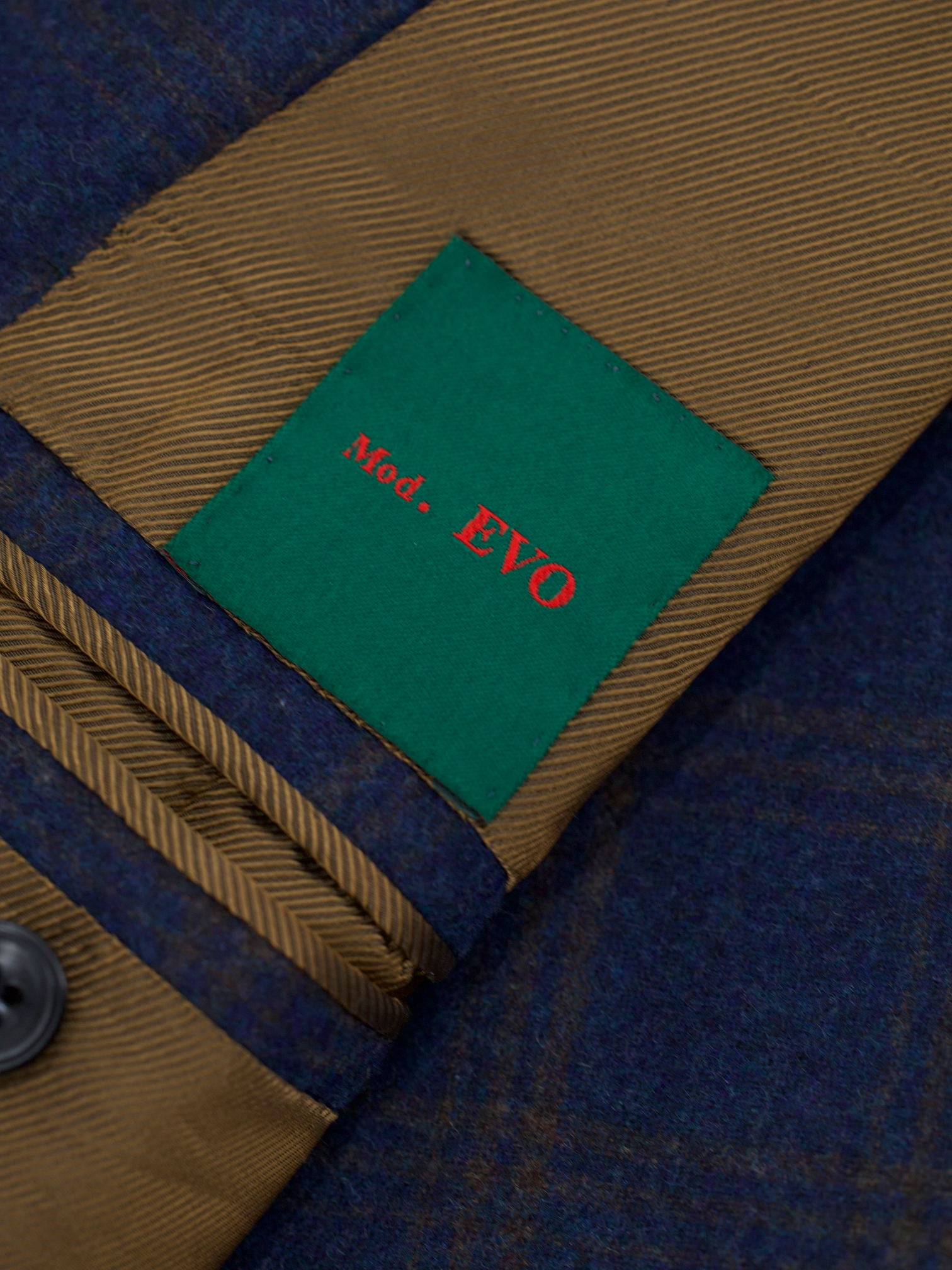
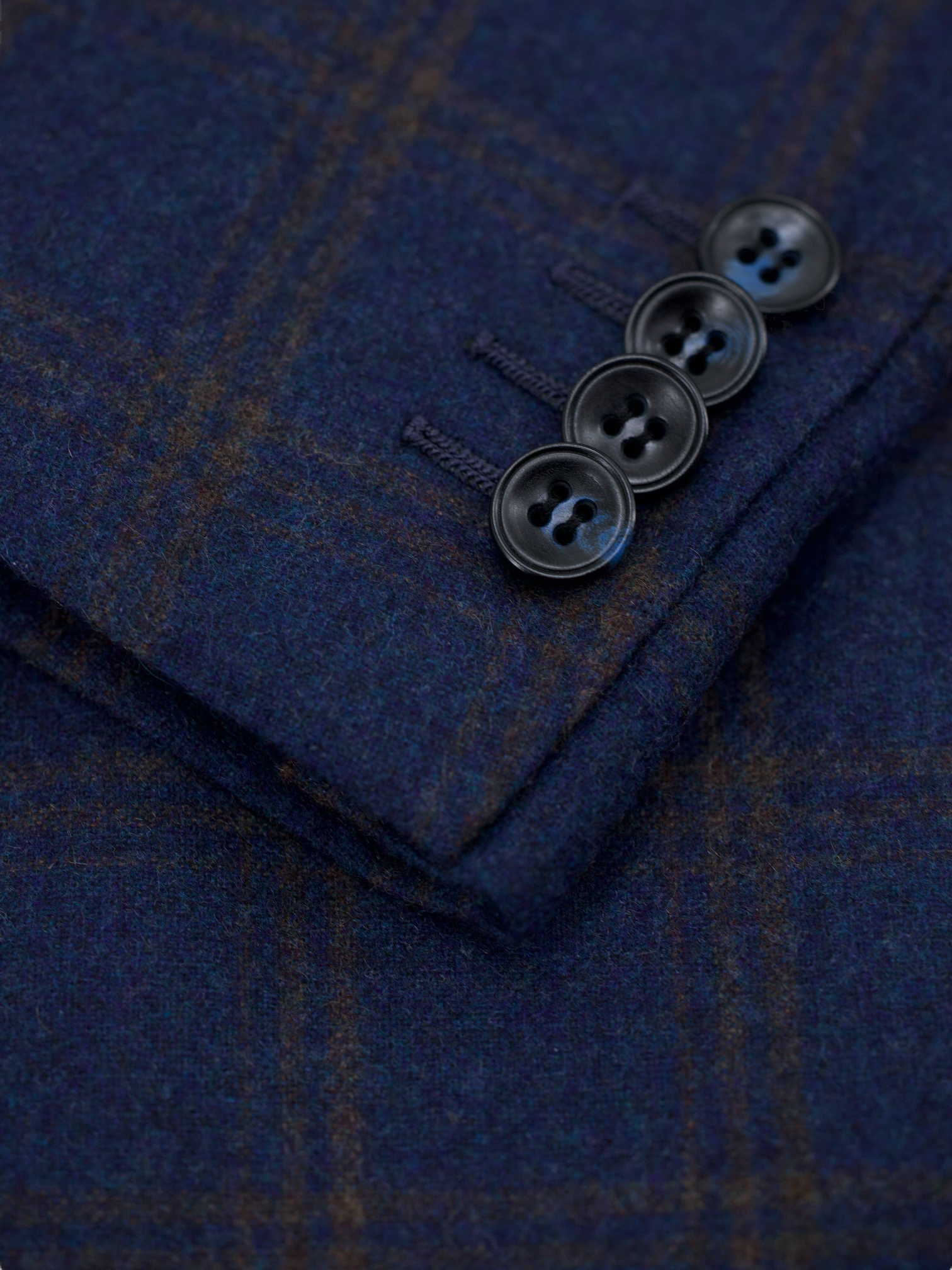
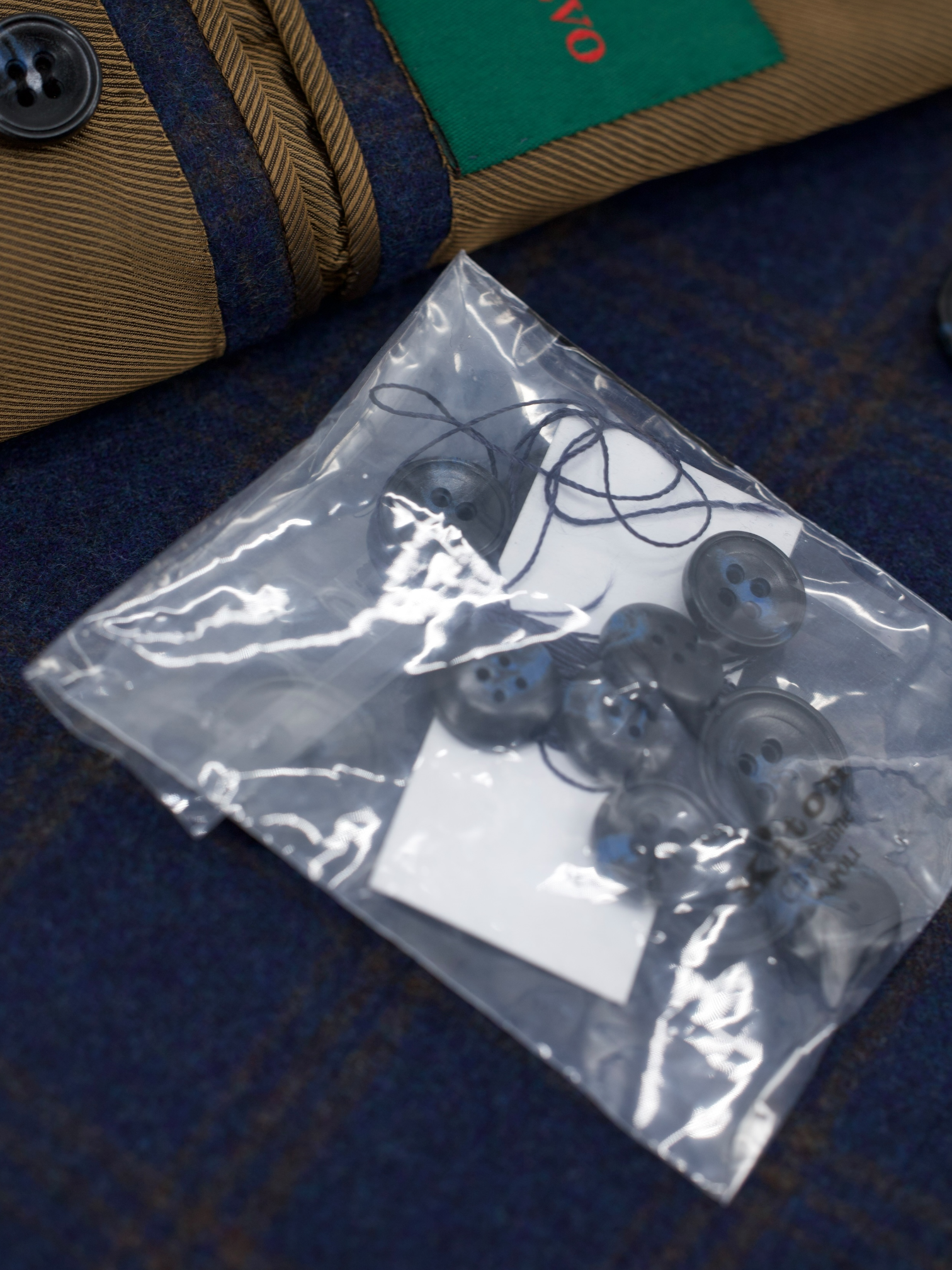
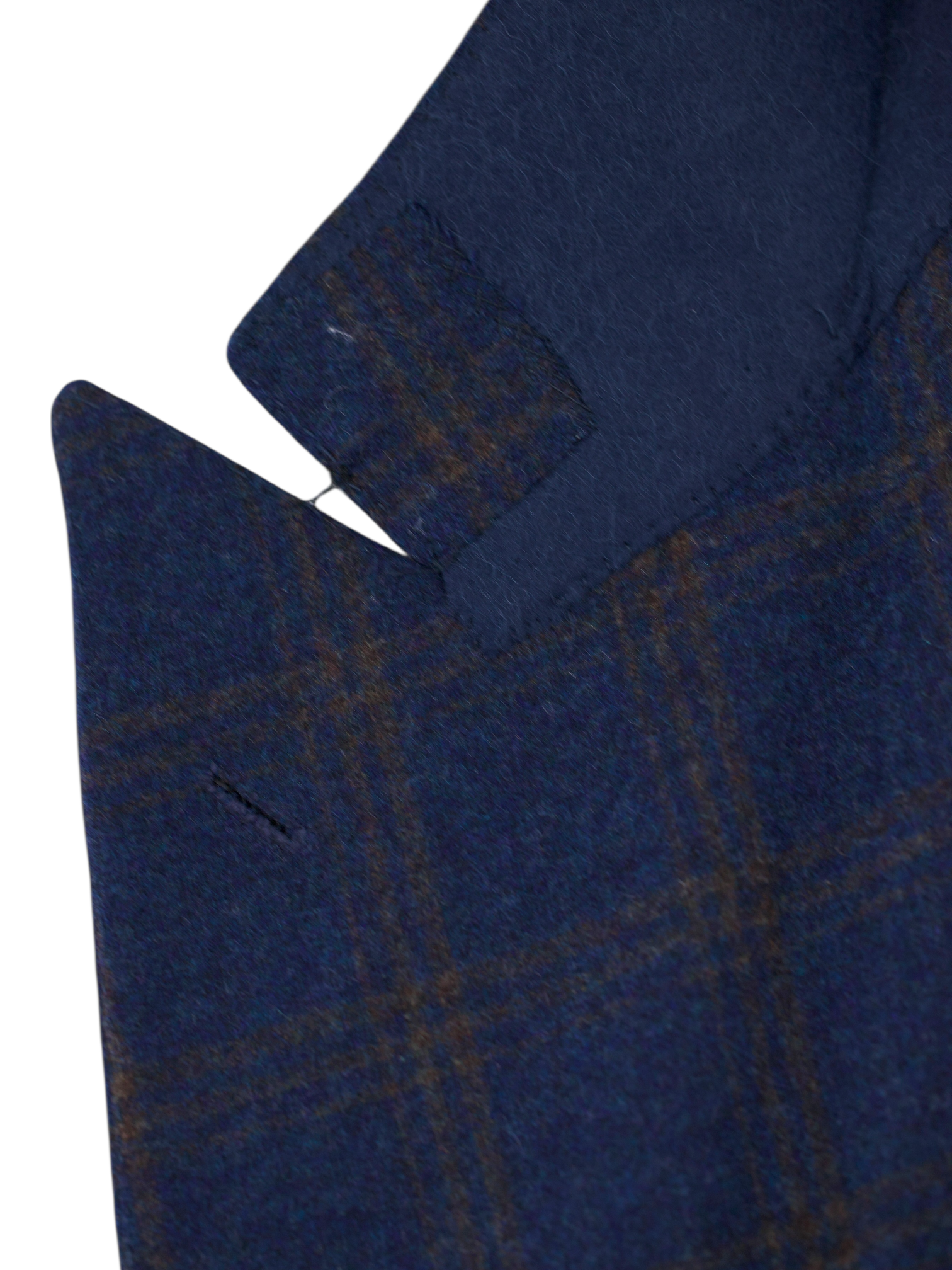
Kiton Dark Blue & Brown Pure Cashmere Double-Breasted "Evo" Jacket
50 IT / 40 US / Large
Discover the Kiton Dark Blue & Brown Pure Cashmere Double-Breasted Evo Jacket, a richly textured statement piece cut for cooler months. The pure cashmere cloth carries a deep blue undertone crossed by a bold brown windowpane, giving the pattern satisfying depth and presence without shouting. Peak lapels emphasise the jacket’s sculpted chest, while slanted flap pockets with a ticket pocket nod to sporting tradition. The silhouette is taut yet fluid, double-breasted for authority, and half lined to preserve the fabric’s softness and drape.
At Kiton, “Evo” denotes a modernised model: a trimmer, slightly shorter cut with a deconstructed feel and light internal architecture, often half lined, to maximise ease and movement while keeping the line clean. Retail descriptions of Evo pieces consistently point to a trim fit, soft construction and partial lining, marrying contemporary proportions with Neapolitan lightness. In practice, that means higher armholes for mobility, minimal shoulder padding, and canvas that supports rather than stiffens, precisely the kind of tailoring that wears comfortably from day into evening.
Fully handmade in the Arzano atelier, this jacket is cut and tacked by hand, then shaped through an extensive sequence of artisanal steps: canvases are inserted and balanced, lapels padded, edges pick‑stitched, and buttonholes sewn by hand. Kiton notes that its jackets are executed by around 25 master craftsmen across some 1,800 operations, a level of attention that underpins the house’s famously natural shoulder and effortless roll; the same ethos sees tailors devote roughly 25 hours to a tailored garment to ensure the harmony of every detail. The result is sartorial excellence with genuine comfort, luxury you feel the moment you put it on. Discover the elaborated sartorial details below.
Composition: 100% Cashmere
Color: Dark Blue & Brown
Pattern: Windowpane
See how we measure our sartorial items
Discover the customization possibilities by visiting our tailor alteration guide
Shipping
- Complimentary shipping on orders over €200 (Netherlands), €500 (EU), and €1,000 (rest of world).
- Orders under these amounts: shipping rates depend on your country.
- Customs duties or import fees may apply and are the customer’s responsibility. The courier may charge additional fees.
Returns
- You have the right to return your order within 14 days of delivery.
- If you wish to return an item, please notify us within 48 hours of receiving your order.
- Return shipping is at the customer’s expense.
- A 10% restocking fee will be deducted from your refund for all returns.
Please carefully review all measurements and quality control notes in the listing before purchasing. Return shipments have an environmental and economic impact. For any questions or if you need help, feel free to contact us before placing your order.
General Note: While we inspect each item to ensure its quality, please note that minor imperfections may be present due to the preloved nature of the garments. We strive to represent every item accurately, but subtle signs of wear may sometimes go unnoticed. We appreciate your understanding and commitment to sustainable luxury.
Choose options










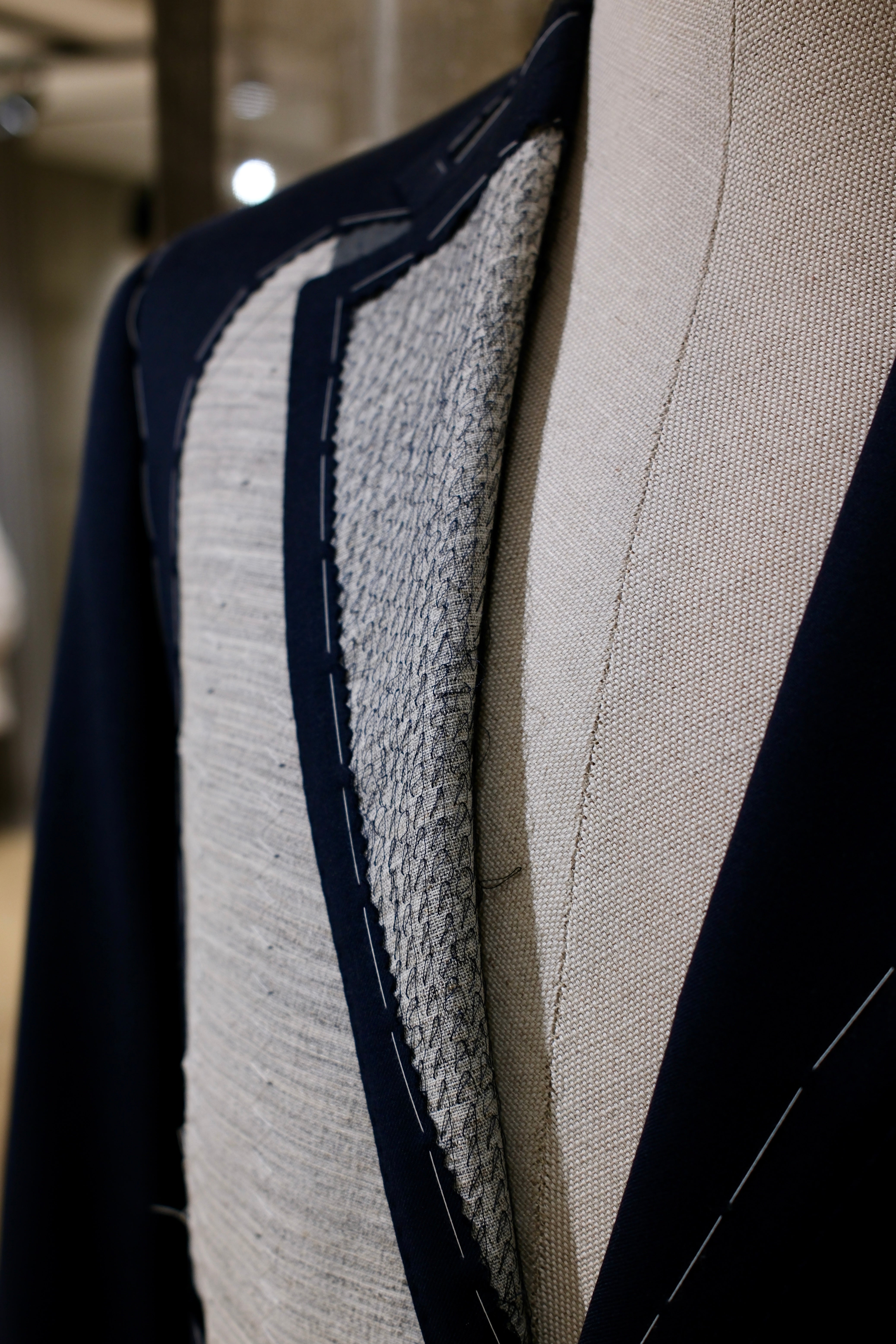
Discover the
Sartorial Details

Full Canvas Construction
A sartorial jacket - or coat - needs an interlining that will help give it shape and mold it. Canvas gives the item a tailored and crafted look. In short, it breathes life into it. Purely technical, canvas is made from either horsehair, wool, mohair or camel hair. It could also be a mix of them all, with varying thickness and weight. The canvas is stitched to the jacket, often by hand, thus making the canvas pieces 'floating' in the middle of the inner and outer cloth. This gives the jacket added flexibility. The canvas runs from the upper parts, all the way down to the end of the jacket. After you wear your canvassed suit for a while, it will begin to take your shape and look incredibly natural.
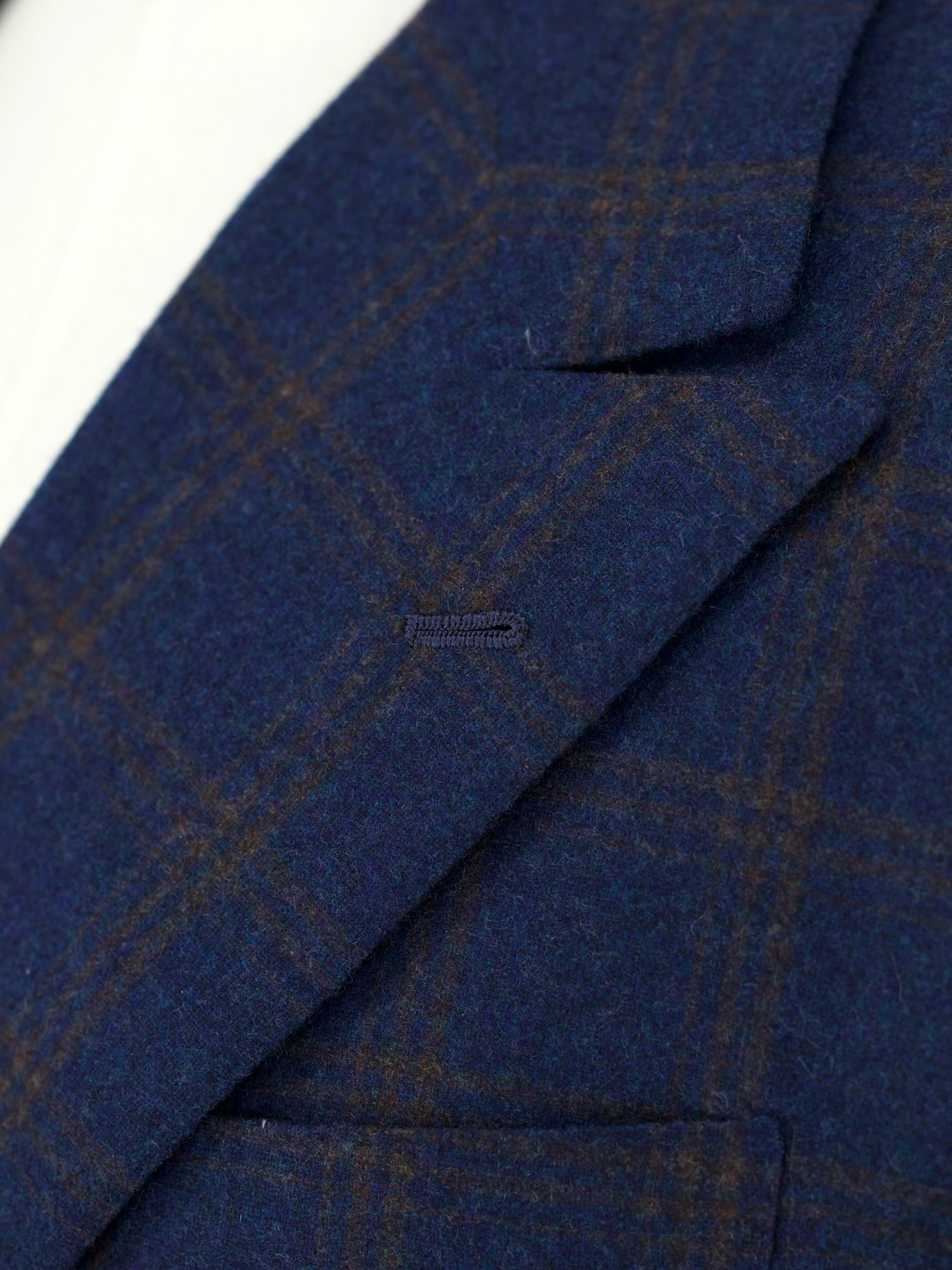
La Spalla Camicia
Spalla Camicia roughly translates to 'shirt sleeve' in Italian and is a shoulder style created and popularized by Neapolitan tailors. The name 'shirt sleeve' was so coined due to the characteristic shirring found at the sleeve's head where the fullness of the larger sleeve collapses. Rather than having the head of the sleeve turned back and stitched inside, the head is lapped under and stitched along the top.

Handmade Buttonhole
Handmade buttonholes are made using a chain of knotted loops called purl stitches that make them strong and visually distinctive. It takes about five seconds to sew a regular buttonhole with a machine – a single handmade buttonhole takes about 10 minutes to sew.

Neapolitan Double Breasted Closure
There are many types of double-breasted jackets, though the most popular is the 6×2 button configuration – six buttons in two rows. The rule of thumb is that only one button should be closed and leaving the other one alone. Most commonly the middle button is closed and the lower button remains open. That being said, a Neapolitan double breasted jacket is cut in a way both the middle or lower button can be closed. Then again, button the lower button and leave the middle one alone. One feature of the double-breasted jacket that many may not pay attention to, is the presence of an inner button that isn’t seen. This button should be closed at all times as it helps to keep the jacket laying on the body.
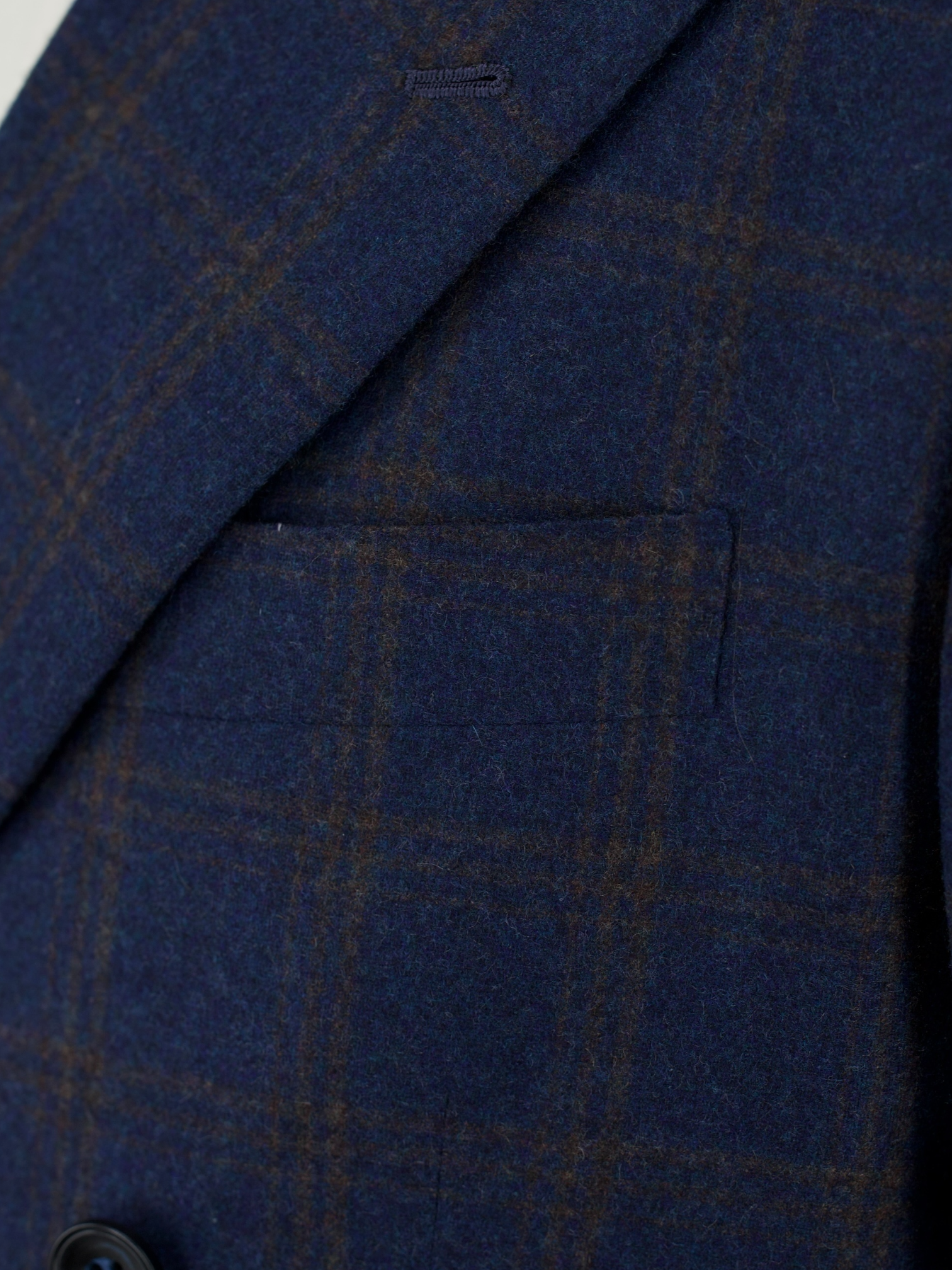
Barchetta Chest Pocket
The barchetta pocket is often thought to be a tailoring detail exclusively from Italy. The word “barchetta” is Italian for “little boat.” It describes how the pocket floats on the chest, gently angled upwards, like the bow of a sailboat.
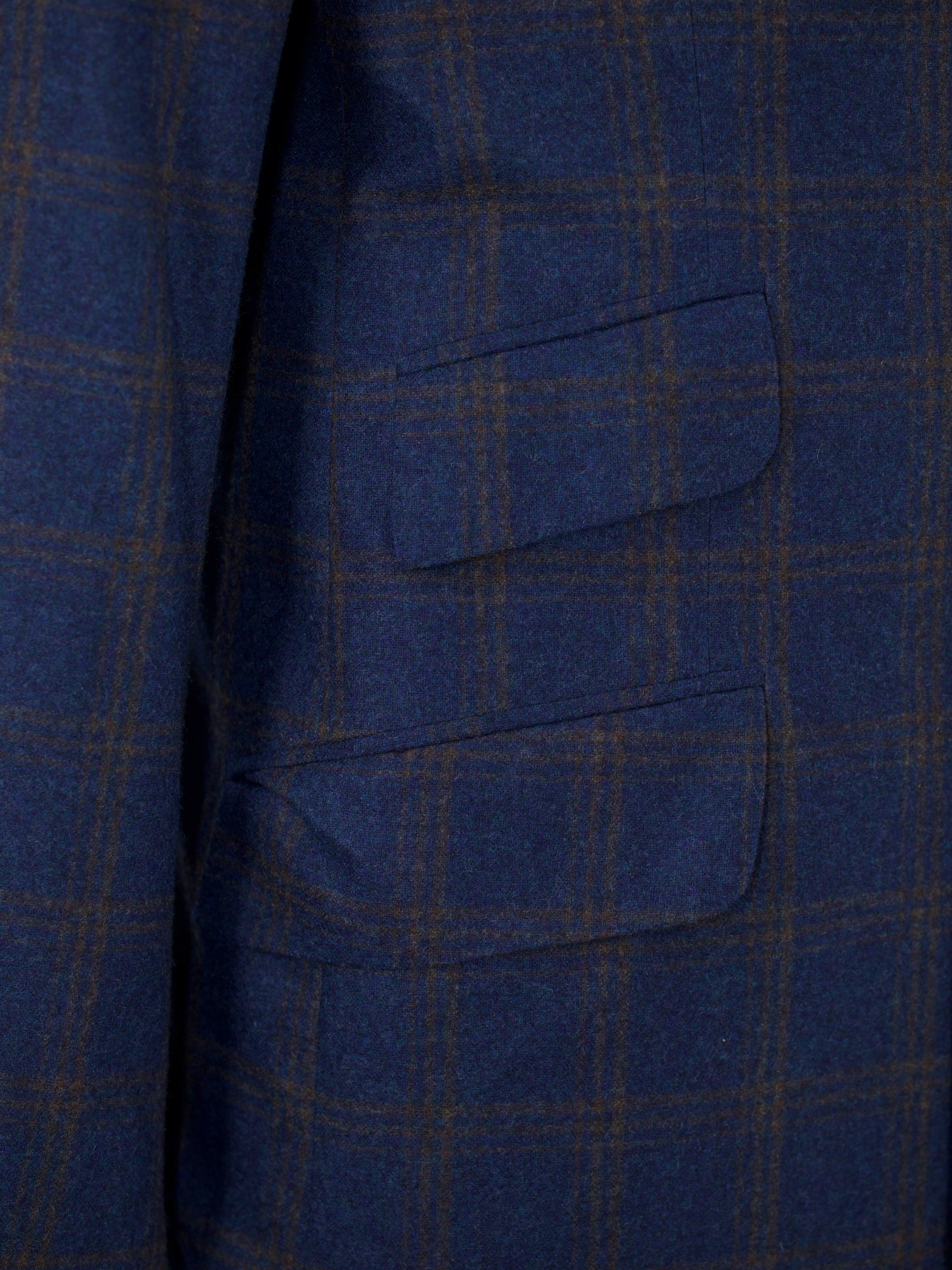
Darts - Mezzo Punto Riprese
Kiton’s master tailors add two darts - think of them as pinched seams - to ensure the jacket’s body achieves a slim silhouette. The process, called mezzo punto riprese, is done entirely by hand.

Kissing Buttons and Handmade Buttonholes
Also known as stacked buttons or waterfall buttons, kissing buttons are associated with Italian tailoring as Italian tailors make their jacket sleeve buttons in the kissing style. In this style, buttons touch each other and overlap one another. Handmade buttonholes; Even this step, apparently the simplest, is treated with an abundance of detail. Attaching the buttons is a job that requires patience and must be completed to perfection.

Flap Pockets
This was originally supposed to keep debris from getting into jacket pockets when worn in the country. Flap pockets occupy a sort of middle ground in terms of formality: they are the main choice for business suits, but they can also appear on sport coats as a testament to their casual origins.
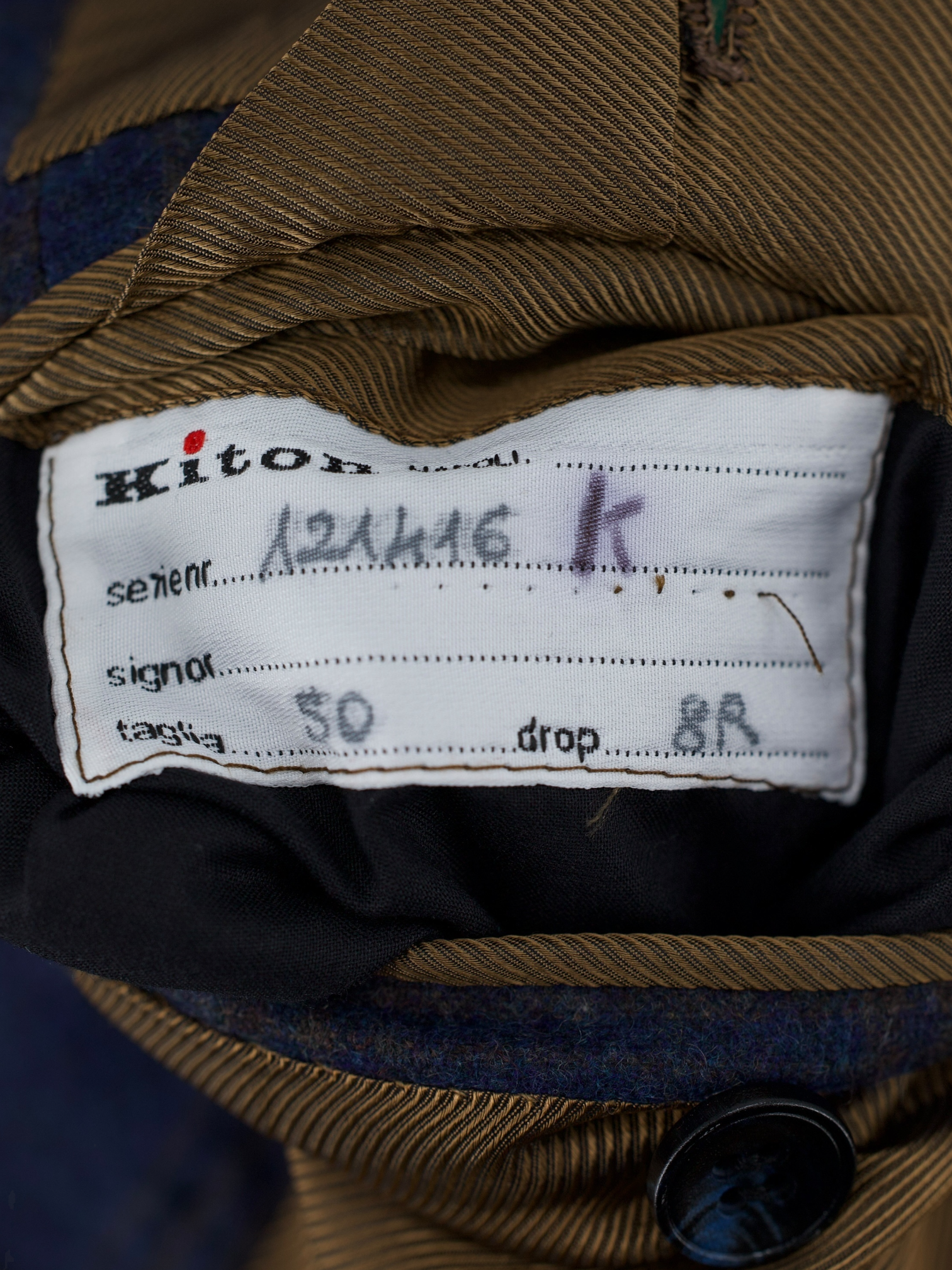
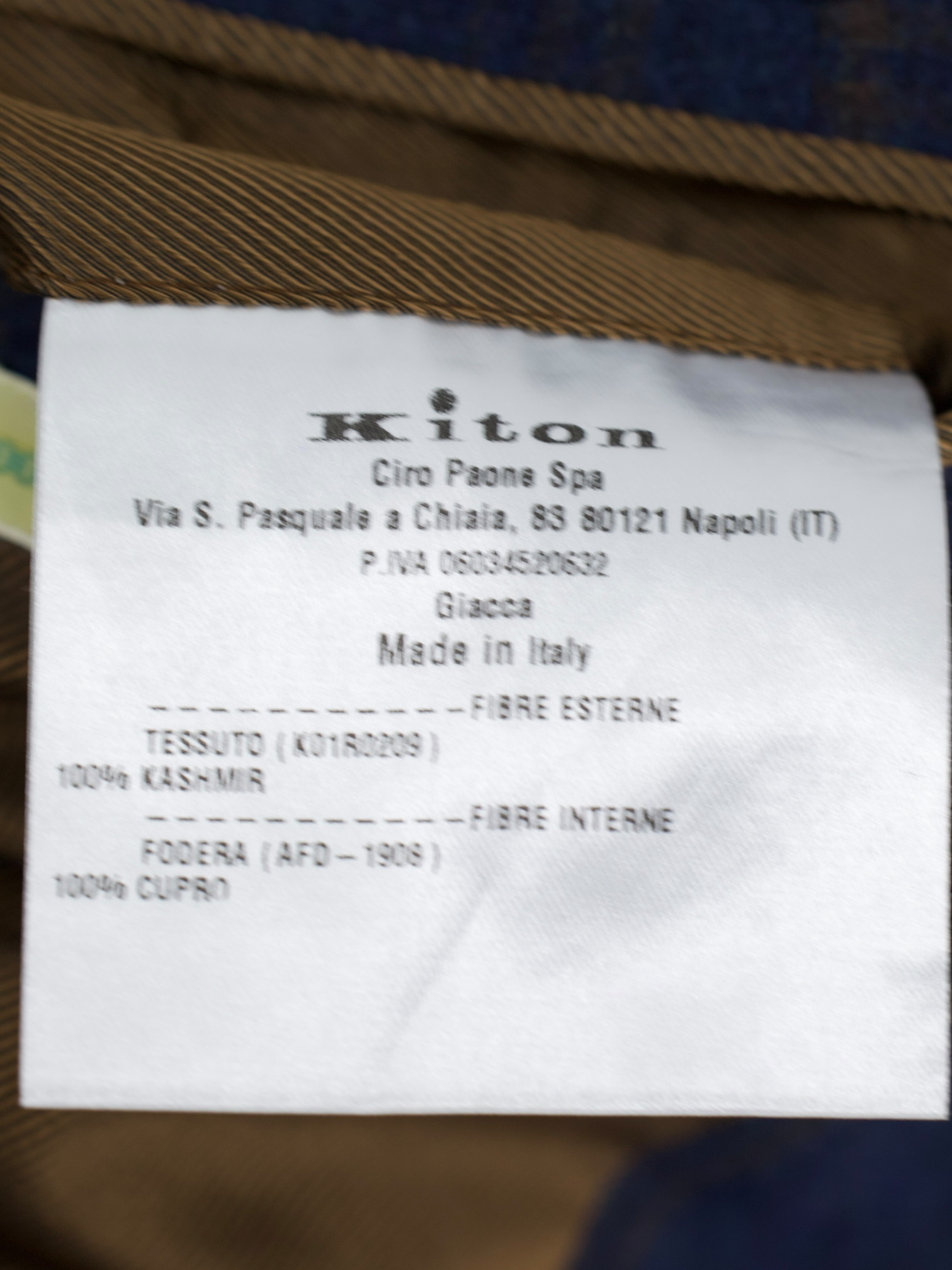
size
50 IT / 40 US / Large


 Curator's Description
Curator's Description Materials
Materials